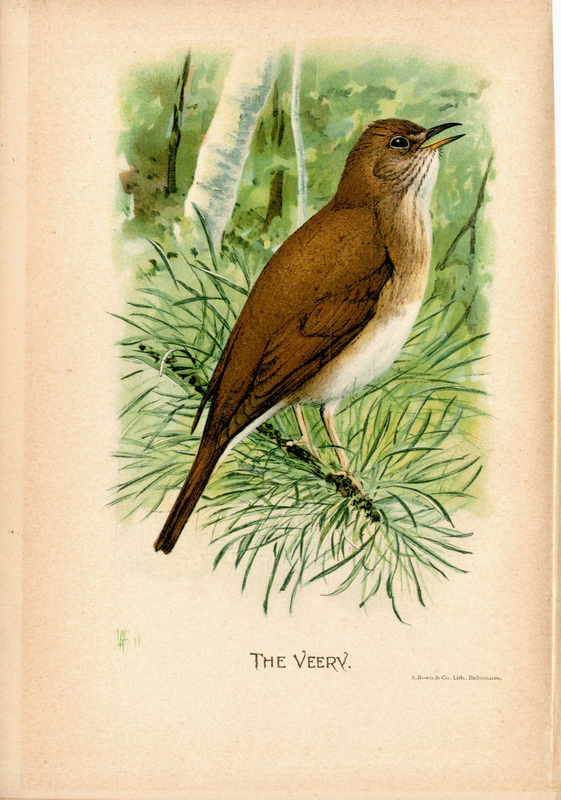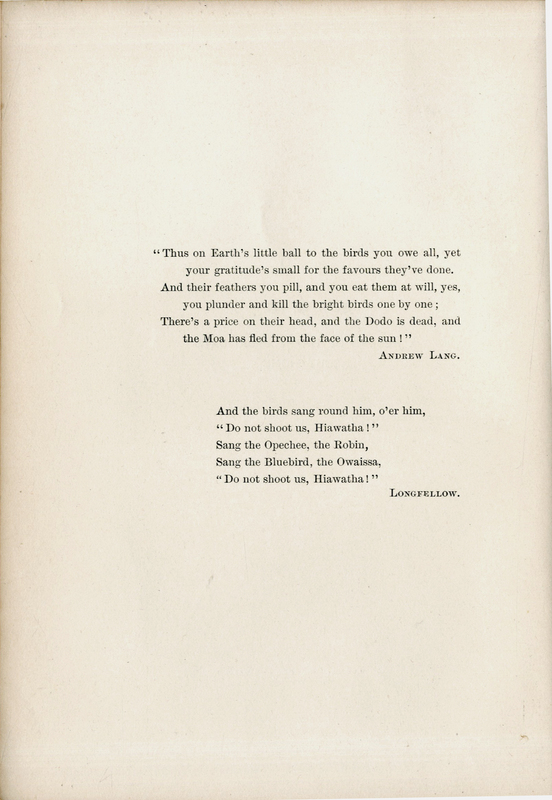Mabel Osgood Wright (1859-1934) was born to Samuel and Ellen Haswell (Murdock) Osgood in New York City. After her marriage in 1884 to James Osborne Wright, an Englishman, she moved with her husband to Fairfield, Connecticut, where lived for the rest of her life
Wright's first printed work (apart from a few verses), was the essay "A New England May Day", which appeared in the New York Evening Post in 1893. This work was collected with other pieces into her first book, The Friendship of Nature, published by Macmillan in 1894. The following year, Wright released Birdcraft: A Field Book of Two Hundred Song, Game, and Water Birds. A prototype of the modern Filed guide to birds for a popular audience, Birdcraft featured color reproductions from John James Audubon and other artists to illustrate species commonly encountered at home or in a neighboring park. A later edition (the one is this collection) credits Louis Agassiz Fuertes as a contributing artist. Two years later, Wright's Citizen Bird: Scenes from Bird-life in Plain English for Beginners, a collaboration with Eliot Coues, appeared.
From its inception in 1899, Wright contributed to Chapman's Bird-Lore, co-editing its Audubon department with William Dutcher. She served as a contributing editor until her death. She helped organize the Connecticut Audubon and became its became its first president in 1898. From 1905 to 1928, Wright was a director of the National Association of Audubon Societies. Wright became an associate member of the American Orthinologists' Union in 1895, and was one of the first three women raised to elective membership in 1901, along with Florence Merriam Bailey and Olive Thorne Miller.Wright pioneered bird protection by establishing Birdcraft Sanctuary in 1914, near her home in Fairfield. The refuge is the oldest private songbird sanctuary in the United States.
From her beginnings as a writer about children, nature, and outdoor life, Wright's reception from the public was cordial. However, when she began to publish works of fiction, she concealed her identity as their author until they had won recognition independently, taking the pseudonym of "Barbara." Much of the material to which she gave attractive literary expression she found in the large garden at her home in Fairfield. Although Wright is remembered more for her nature writing, some aspects of her fiction are notable. Some of these romances were unconventional in form, combining passages of fictional narrative with letters, diary entries, and nonfictional pieces of autobiography, social criticism, and gardening lore. It is said that that her fictional range was narrow, limited demographically to the upper classes of Manhattan and New England and emotionally to scenes of domestic piety and sentimentality. But her observations of changing social patterns (the "new magnates" of the new century and increased suburbanization) and of the growth of feminism are worthwhile. Her ambivalence toward the changing role of women is interesting, with sympathy on the one hand and shrill attacks on careerism on the other.
https://en.wikipedia.org/wiki/Mabel_Osgood_Wright





